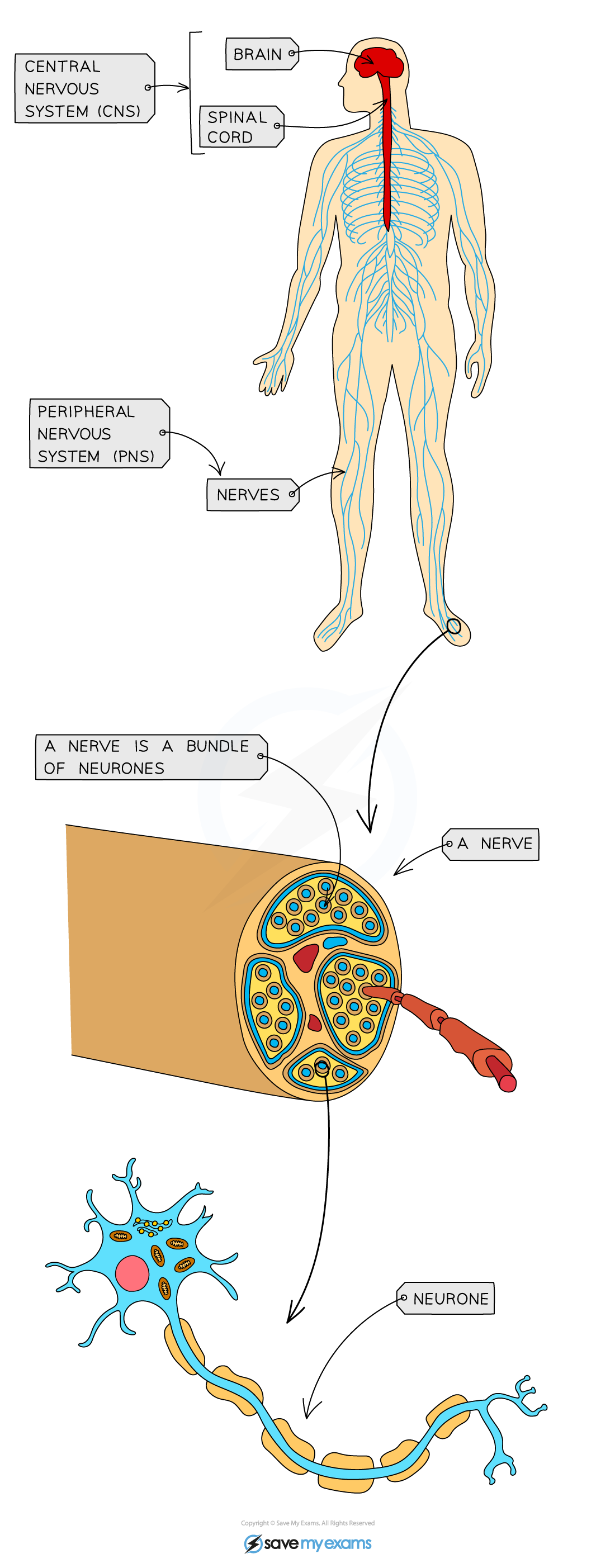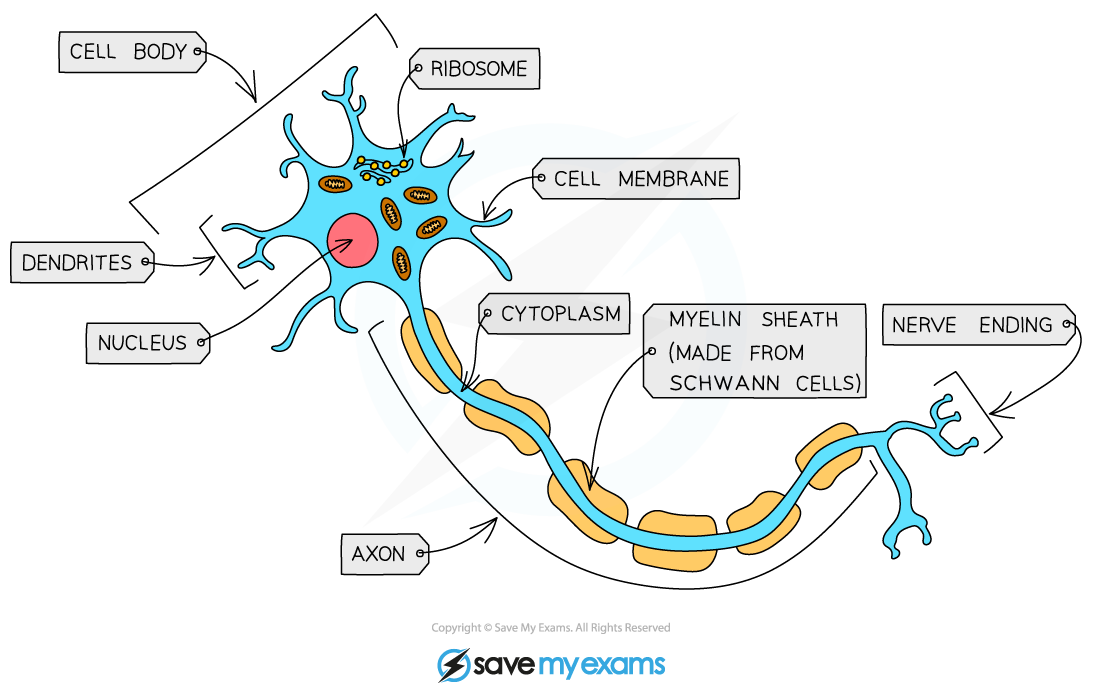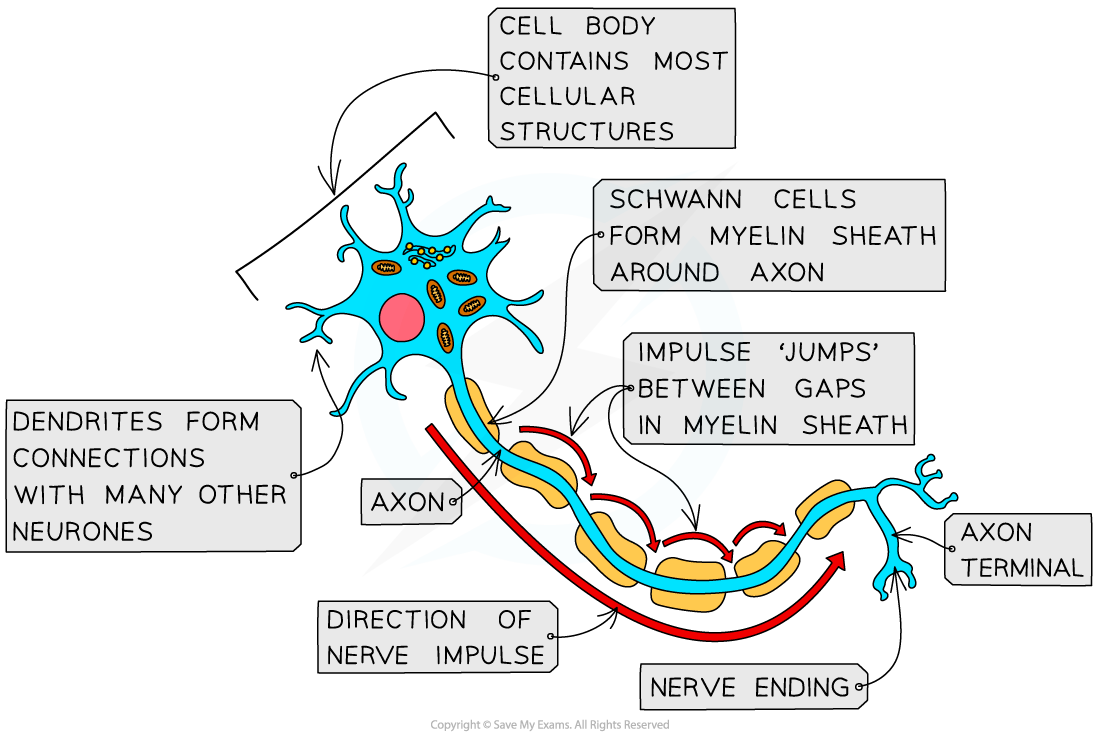Function & Structure of Neurones
The nervous system
- The human nervous system consists of:
- Central nervous system (CNS) – the brain and spinal cord
- Peripheral nervous system (PNS) – all of the nerves in the body
- It allows us to make sense of our surroundings and respond to them, and to coordinate and regulate body functions
- Information is sent through the nervous system in the form of electrical impulses – these are electrical signals that pass along nerve cells known as neurones
- A bundle of neurones is known as a nerve
- The nerves spread out from the central nervous system to all other regions of the body and importantly, to all of the sense organs
- The CNS acts as a central coordinating centre for the impulses that come in from, and are sent out to, any part of the body

The human nervous system is comprised of the CNS and the PNS
Neurones
- The following features are found in neurones:
- Neurones have a main, long, fibre known as an axon
- They have a cell body that contains the nucleus and other cellular structures
- Their cell bodies and axon terminals contain many extensions called dendrites
- These dendrites allow them to connect to many other neurones and receive impulses from them, forming a network for easy communication

Neurones have a characteristically elongated structure which allows them to transfer information between the central nervous system and the rest of the body
Research
NOS: Cooperation and collaboration between groups of scientists; biologists are contributing to research into memory and learning
- Some of the so-called 'higher' functions of the brain e.g., memory and learning, are still not fully understood and are the focus of much current research
- Biologists are becoming increasingly involved in this research, which uses techniques from the fields of neurobiology, molecular biology, and biochemistry to understand the mechanisms behind these brain functions
- The Centre for Neural Circuits and Behaviour (CNCB) at the University of Oxford is a good example of an institution in which scientists with different areas of expertise collaborate, or work together, with a common research goal
- The research team at the CNCB contains experts in various fields of biological science, including medicine, physiology, genetics, molecular biology, neurobiology, and neurogenetics
- Research into functions of the brain such as memory and learning not only involves collaboration between scientists from different specialities, but also from different countries
Myelination
- Neurones have a main, long, fibre known as an axon
- The axons of neurones are surrounded by specialised cells called Schwann cells
- Schwann cells wrap themselves around the axon, forming a structure known as a myelin sheath
- Myelin contains the phospholipids of the Schwann cell membranes; it is built up in layers as the Schwann cells grow around the axon
- The lipid content of the myelin sheath gives it a high electrical resistance
- The myelin sheath acts as an electrical insulator; impulses cannot pass through the myelin sheath
- The myelin sheath has small, uninsulated sections in the gaps between the individual Schwann cells
- These gaps are called nodes of Ranvier
- Electrical impulses effectively jump from one node of Ranvier to the next
- This process is known as saltatory conduction
- It greatly speeds up the rate of transmission of impulses along myelinated neurones
- In non-myelinated neurones the axon is not insulated by myelin, so the impulse travels more slowly

An impulse travels down a neurone via saltatory conduction
